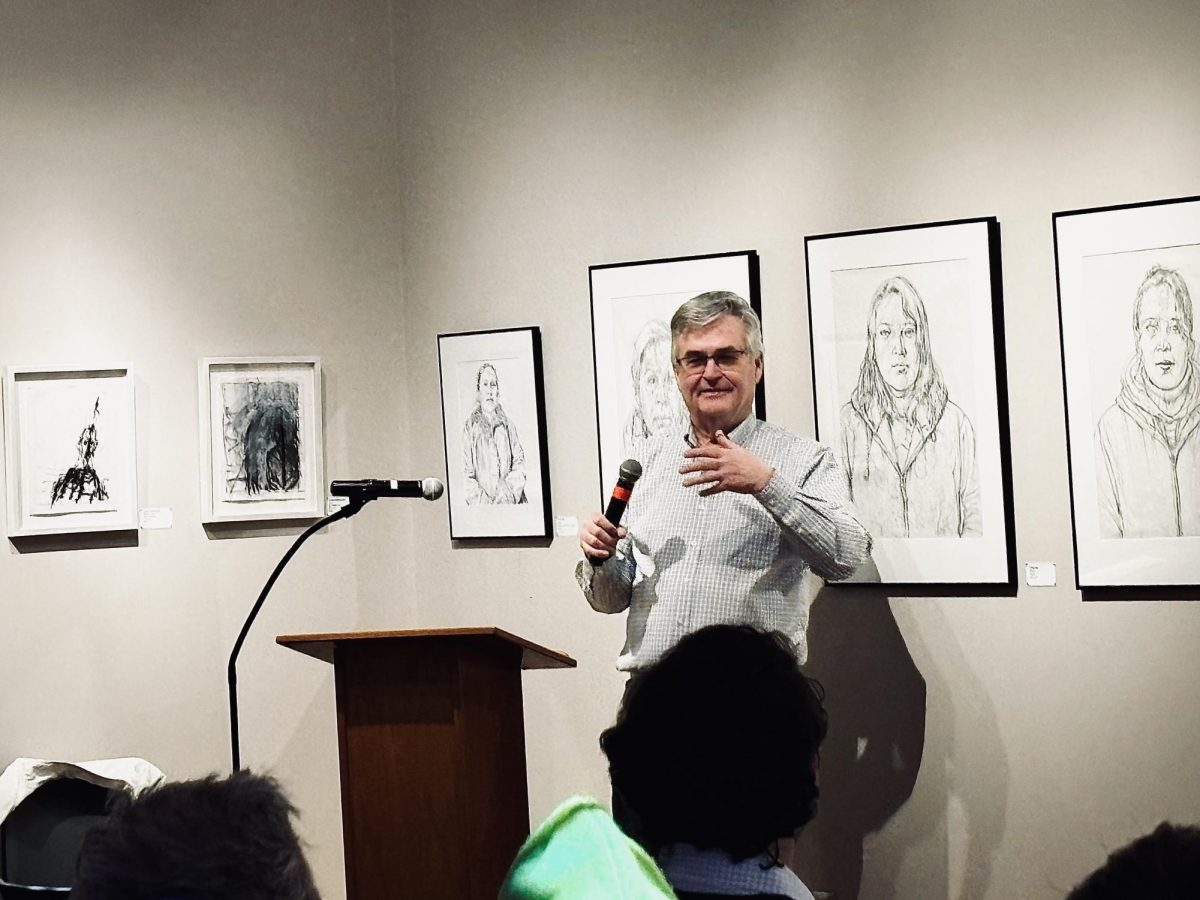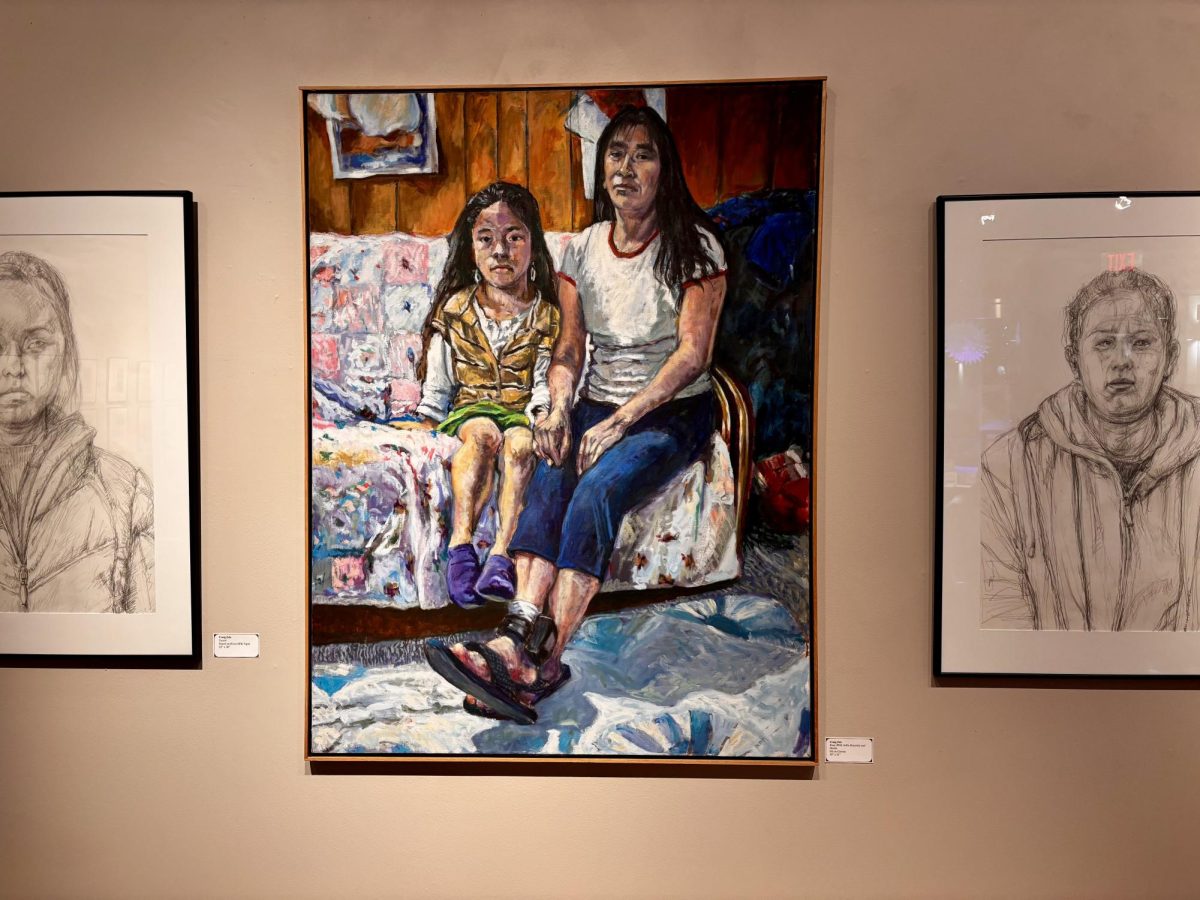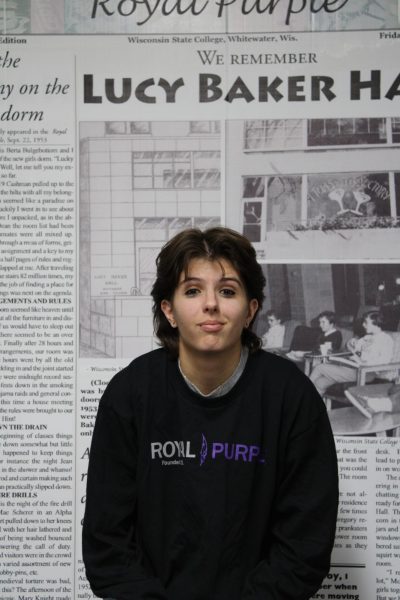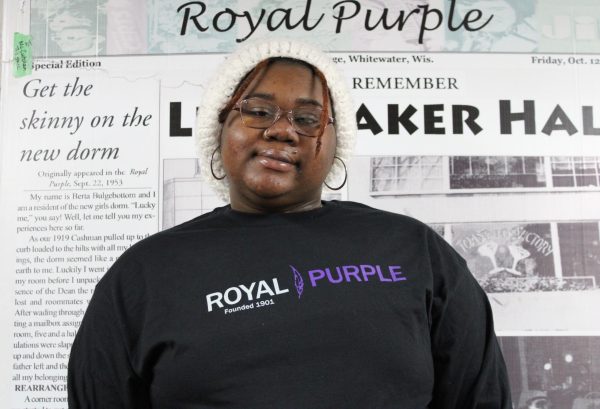“When we look at these faces, they are assumptions and false implications. But they are a call to action, not to make false assumptions, we are citizens and workers,” Dr. Luz Hernandez, an assistant professor of Spanish at the University of Wisconsin-Whitewater said.
Roberta’s Art Gallery inside the James R. Connor University Center held the reception for this month’s art gallery Tuesday, Feb. 18. The exhibit, entitled “Neighbors: Near and Far Exhibit,” highlights three artists: Craig Ede, Dan Gamble and Charlie Steinbrecher. Ede alongside special guest Luzma Ede-Hernandez were in attendance at the reception. Some pieces on display originally were made in 2008 and haven’t been shown since, while others were made more recently. Regardless of the timeline each piece of art holds a live meaning, each piece is a depiction of real people who are either now citizens or were deported.
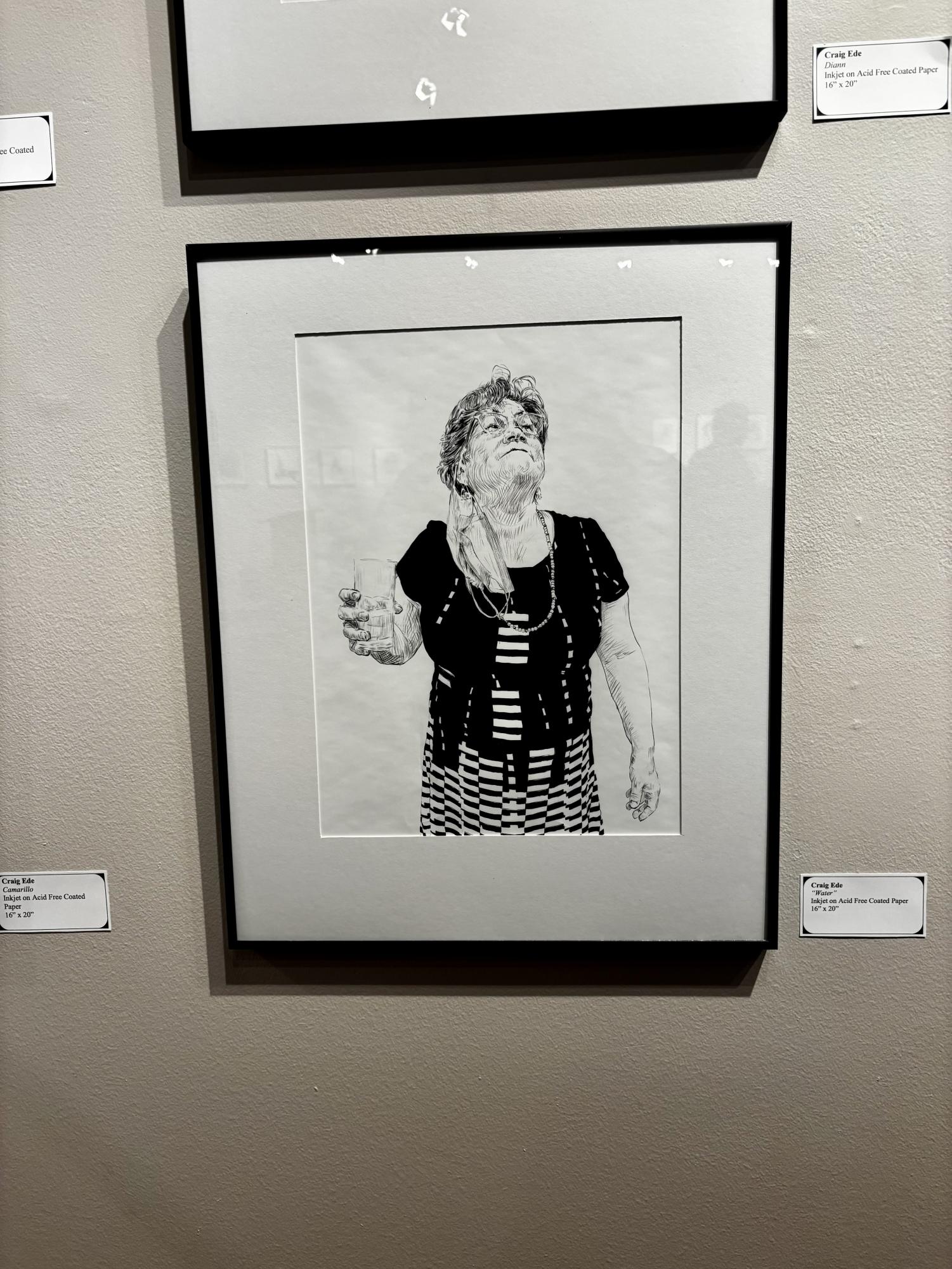
“Neighbors near and far were made to provoke thought on what a neighbor is and how to perceive them,” Ede said, “the idea that comes out in political discourse where people don’t talk about individuals, they talk about classes of people that they are trying to get rid of. But these are actual individuals, they each have their own personal presence.”
Ede, a former Whitewater World of the Arts professor, was asked to do the exhibit in October 2024 but dragged his feet to respond for a month. Then he decided to join efforts with UW-W to create the exhibit in a town that gets lots of coverage on this topic.
“After the election, it seemed like a good time for people to actually see the drawings again. I thought it would be a good time to kind of humanize immigrants,” Ede said.
Soon after Ede invited his college buddies Gamble and Steinbrecher to join him in the exhibit. Gamble was an undergraduate while Ede and Steinbrecher were graduate students when they all originally met.
“We (Ede and Steinbrecher) were young guys on fire with teaching,” Ede said. “We encouraged each other and we worked together.”
The exhibit itself was inspired by the biggest immigrant raid of that time in Postville, Iowa. Just 18 miles from Ede.
In Postville, there was a kosher meat packing plant that probably provided most of the kosher meat in the country. Their entire workforce was undocumented immigrant labor. The U.S. got a hold of this fact and raided it. At this time there was a new kind of raid called mass arrests. They had warrants to arrest about 800 people during a shift change. In the end, roughly 389 people in a town of 2,600 were arrested. After this, a few hundred more people fled town. A third of the town just disappeared, overnight through either being arrested or just disappeared. Churches worked together to help, one of them in particular was a Catholic church that had a Hispanic ministry, which was then used as the center for aid. Of about 400 people, there were 48 who got citizenship through U Visas because of the crimes committed against them, but that is only roughly 12 percent. Most of the drawings in the exhibit are of women because they were released with painful leg monitors to raise their children while their husbands were in jail.
“Watching all this happen, I just thought, ‘Well, how strange, a third of the town disappears and what’s gonna happen? Are they just gonna be written out of history?’ I started doing drawings of the people while I was helping out. We got to have some record that these people were here, that’s how it started,” Ede said.
Most of the people depicted in the paintings are either now citizens or were deported.
Hernandez, a special guest at the exhibit, had a personal connection to the issue being depicted with the art. She was a volunteer/communicator between the immigrant agents and the immigrants. Now she has been a professor in the United States for over 20 years.
“These drawings are documentation,” Hernandez said, “they are results of immigration laws, how they destroy families and traumatize children.”

